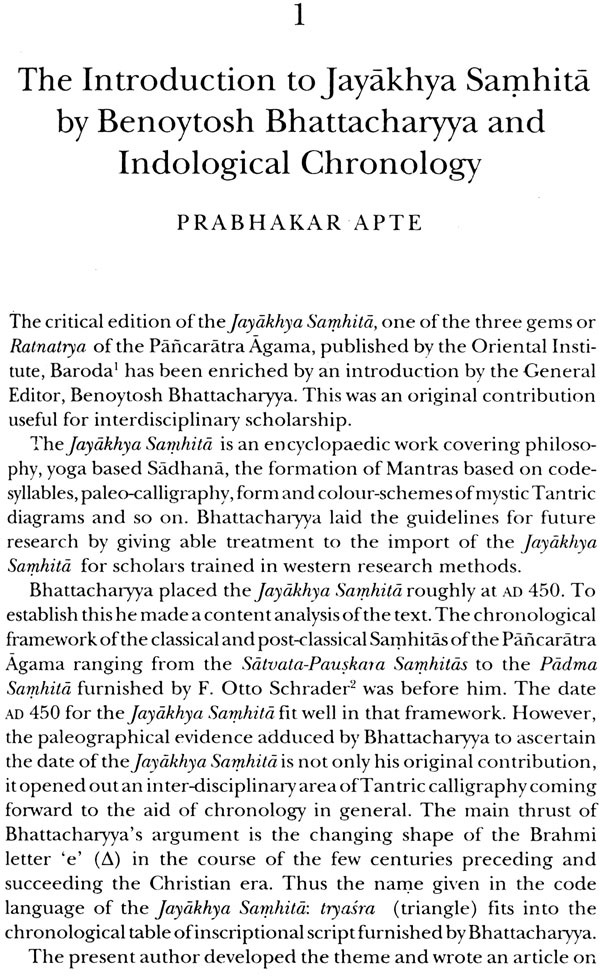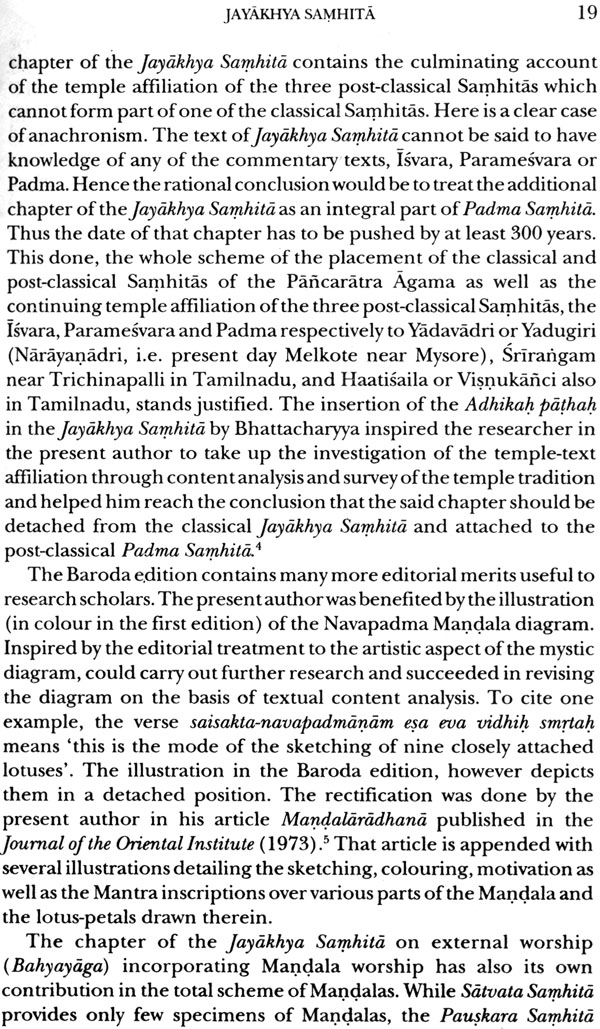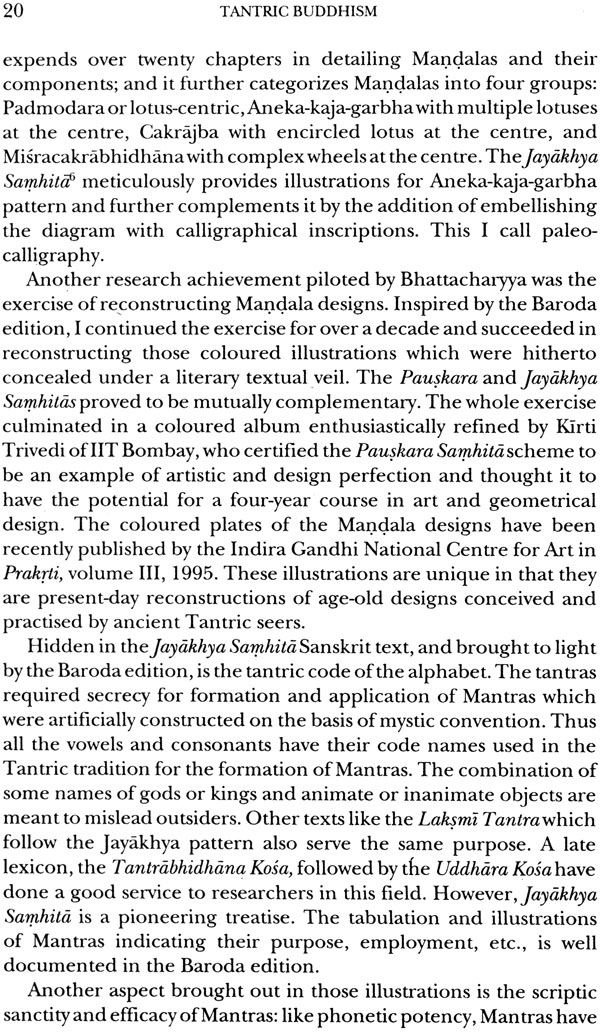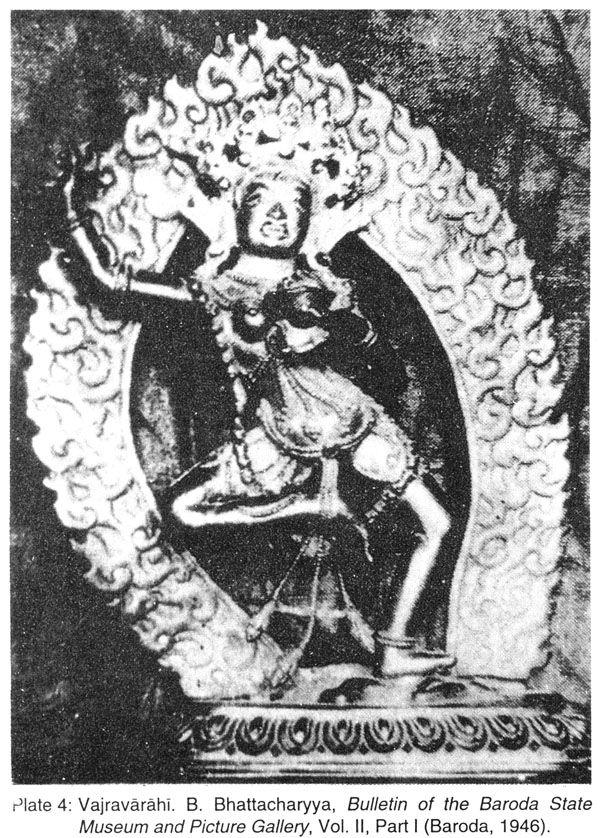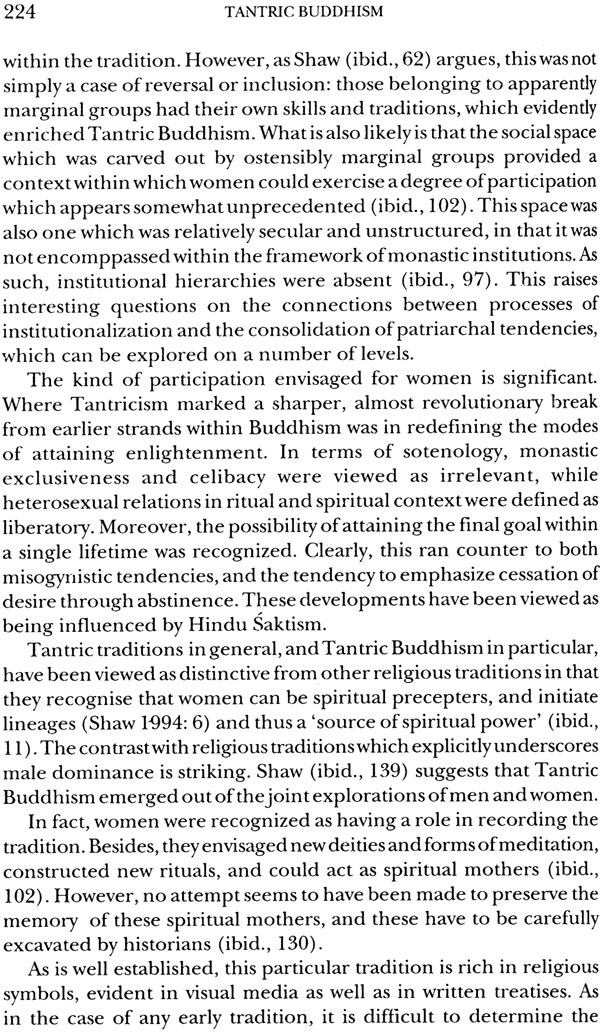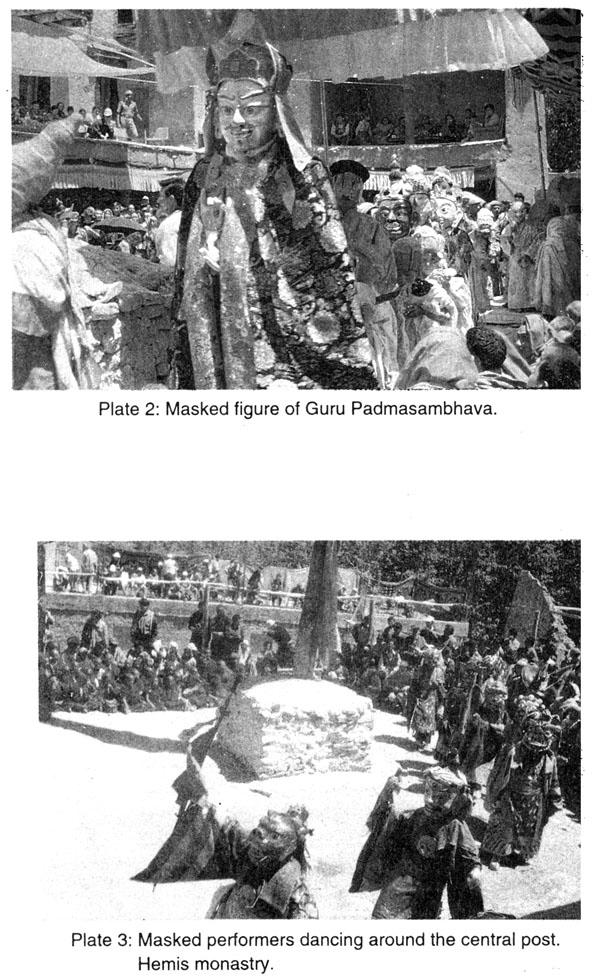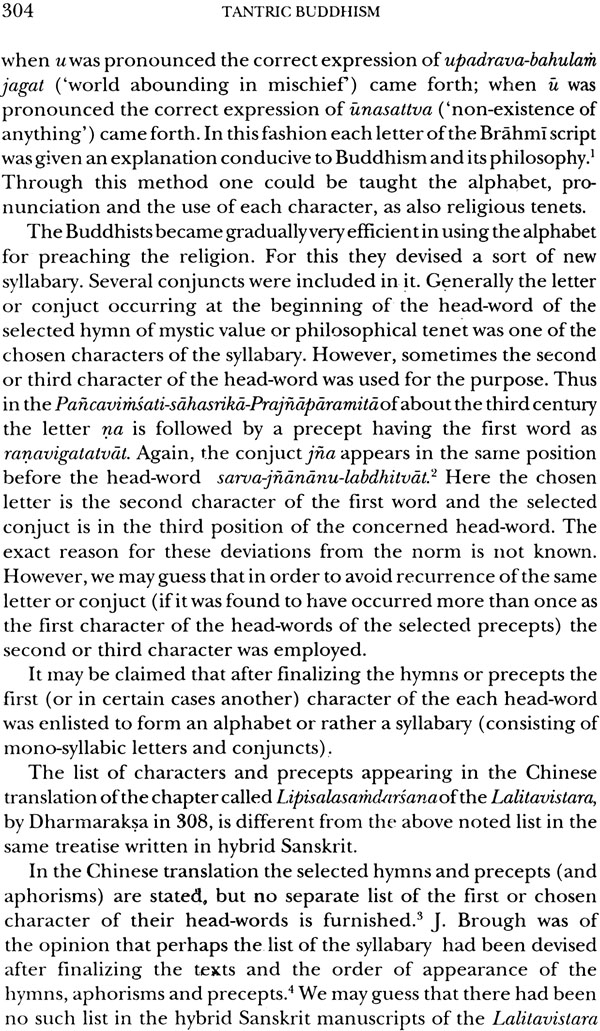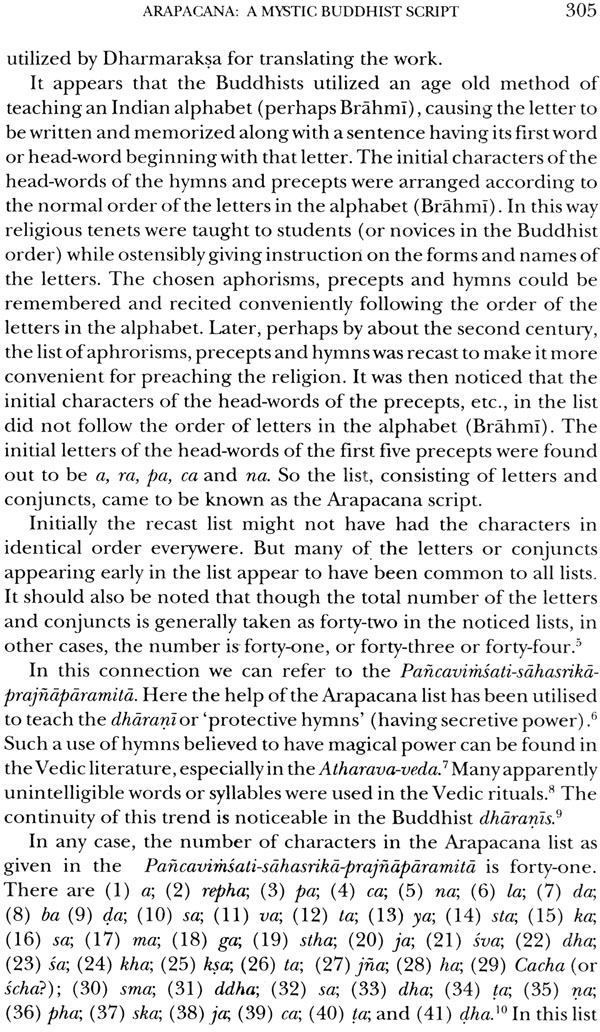
Tantric Buddhism
Book Specification
| Item Code: | IDK842 |
| Author: | N.N. Bhattacharyya & Associate Editor: Amartya Ghosh |
| Publisher: | Manohar Publishers and Distributors |
| Language: | English |
| Edition: | 2005 |
| ISBN: | 8173046492 |
| Pages: | 328 (34 Illustrations in B/W) |
| Cover: | Paperback |
| Other Details | 8.6" X 5.5" |
| Weight | 360 gm |
Book Description
This is a centennial tribute to an outstanding pioneer in the field of Tantric-Buddhist studies, Dr. Benoytosh Bhattacharyya (1897-1964). The volume contains papers by a generation of scholars on different aspects of Tantric Buddhism and Tantrism in general. We are grateful to all who have contributed to this volume out of their genuine respect to the scholarship of Dr, Benoytosh Bhattacharyya.
In the preparation of the volume we have been immensely assisted by Dr. (Mrs.) Kalpakam Sankarnarayan, Director, Somaiya Centre of Buddhist Studies, Bombay, who has not only shown great interest in the project, but also made contract with scholars and persuaded them to contribute to this volume. In a similar way we have been assisted by Prof Suniti Kumar Pathak, formerly of the Visva-bharati University. Here we like to put on record the constant support and encouragement of Dr. Benoytosh and convener of the Benoytosh Centenary Committee, who was the driving force behind this project. Finally we thank Ramesh Jain and Ajay Jain of Manohar Publications & Distributors, New Delhi, for bringing out this volume as a fitting tribute to Dr. Benoytosh Bhattacharyya.
Dr. Benoytosh Bhattacharyya, one of the greatest pioneers of Tantric and iconographical studies, was born on 6 January 1897 at Deasin in Burdwan District, West Bengal. His father was the celebrated Indologist, Mahamahopadhyaya Haraprasad Sastri, whose contributions to Buddhism, Sanskrit literature, ancient Indian history and civilization, Bengali literature, as well as manuscriptology were proverbial. His mother was Hemantakumari Devi. His family background was unique. It was an ancient family of Brahmana Pandits of Bengal with a genealogical record of a few centuries. Manikya Tarkabhusana, one of his illustrious ancestors, settled in Naihati (about 38 km north of Calcutta) and established a catuspathi or tol for imparting Sanskrit knowledge. (In such tols students were fed, clothed, housed and taught for several years free of charge. The British government was careful to support and maintain this tradition, but after Independence successive governments allowed the tols to perish.)
Manikya, who was patronized by Maharaja Krishna Chandra of Nadia, settled in Naihati on the fall of Nawab Siraj-ud-daullah after the battle of Plassey in 1757. His son Srinath Tarkalankara continued his father's vocation of teaching Sanskrit. Srinath's son Ramkamal, an erudite scholar in Nyaya philosophy, was respected all over Bengal for his knowledge and dedication to the cause of Sanskrit teaching. Ramkamal passed away in 1860. Among his sons Nandakumar Nyayacuncu was a lecturer of the world of scholarship. His brother Haraprasad who was the fifth son of Ramkamal and a favourite of Pandit Iswar Chandra Vidyasagar and Bankim Chandra Chatterjee, obtained an M.A. degree from Calcutta University, and the title Sastri for his proficiency in Sanskrit. His contributions to Indological and Buddhological research and also to the field of Bengali literature made his fame spread far and wide, even over the seas. He taught at Calcutta University which conferred on him the title D. Lit. honoris causa. He was president of the Vangiya Sahitya Parisad and the Asiatic Society. The Government of India honoured him twice, once with a Mahamahopadhyaya and the second time with a C.I. E.
Benoytosh was the fourth son of Haraprasad Sastri. He was educated at the Scottish Churches College, Calcutta. He obtained his B.A. in 1917 and M.A. (with a Gold Medal for having stood first) in 1919 in Sanskrit. He obtained Ph.D. degree from the Dacca University (incidentally, he was the first Ph.D. of that University), the title of his doctorate thesis being 'Elements of Indian Buddhist Iconography'. It was first published by the Oxford University Press in 1924 under the title Buddhist Iconography. It should be stated in this connection that for his research Benoytosh had chosen a subject that was almost virgin ground. The usefulness of iconic studies in the Indian context had been first clearly understood by Edward Moor who in his Hindu Pantheon (1810) presented numerous pictures of bewildering variety of Indian gods and goddesses. Alfred Foucher's Etude sur Iconographic de l'Inde (in two parts, published respectively in 1900 and 1905) was the pioneering standard work on Buddhist iconography. This was followed by Alice Getty's Gods of Northern Buddhism (1914) in which, apart from identification, the conceptional background of various Buddhist deities from Tibetan, Chinese and Japanese pantheons had been covered. The first comprehensive work on Hindu iconography was T.A. Gopinatha Rao's Elements of Hindu Iconography which was originally published in two volumes under the patronage of Travancore State in 1914 and 1916 respectively.
The work of Benoytosh (1924) is the next most important in this series. It laid more emphasis on the deities of Tantric Buddhism and their iconographical characteristics as found in the Indian texts. This was followed by N.K. Bhattasali's Iconography of Buddhist and Brahmanical Images in the Dacca Museum (1929), B.C. Bhattacharya's Jaina Iconography (1939) and J.N. Banerjea's Development of Hindu Iconography (1914) which have all attained the status of classics in this field of study. In the work of Benoytosh, passages from the Sadhanamala and Nispannayogavali relating to the description of the deities of Vajrayana Buddhism were pouted and translated into English, along which illustrations from extant Indian, Tibetan and Chinese specimens and also from Nepalese drawing. It dealt with the images of the Dhyani and Mortal Buddhas; the Bodisattavas; Manjusri and Avalokitesvara; emanations of Amitabha, Aksobhya, Vairocana, Amoghasiddhi and Ratnasambhava; the gods and gods and goddesses of direction; the Usnisa gods; the protectresses; Taras of various groups; gods associated with dance, musical instruments, door, light etc.; animal-faced deities; Hindu gods in Vajrayana; the Dikpalas; the nine planets; the Balabhadras; the Yakas and the abstract deities. This magnum opus from which subsequent scholars have drawn heavily was revised in 1958.
Benoytosh entered Baroda State Service in 1924 as General Editor of the Gaekwad's Oriental Series and introduced the modern technique of editing old and rare books. This technique is manifested in his masterly edition of the Sadhanamala, the first volume of which appeared in 1925 and the second in 1928 (GOS, Nos. 26 and 41). Among other texts edited by him are the Jnanasiddhi of Indrabhuti and Prajnopayaviniscayasiddhi of Anangavajra, both of which appeared in 1929 under the general title Two Vajrayana Works (GOS, No. 44). His celebrated edition of the Guhyasamajatantra or Tathagataguhyaka came out in 1931 (GOS, No. 53). It was followed by the edition of the Saktisangamatantra in three volumes (1932, 1941 and 1947 (GOS, Nos. 61, 91 and 114). His edition of the Nispannayogvali was published in 1949 (GOS, No. 109).
He was in charge of the Sanskrit Library. Benoytosh persuaded Maharaja Sayajirao III Gaekwad of Baroda to turn the Sanskrit Library into the Oriental Institute, which was founded in 1927. It has become one of the most celebrated Indological institutions of India and Benoytosh was its Director until his retirement in 1952. In admiration of his services His Highness Sayajirao conferred on him the titles of rajyaratna and jnanajyoti. He was put in charge of the Marathi and Gujarati publications of the State, especially the Sayaji Sahityamala, Baalajnanamala and the Gramavikasamala. He organized the Seventh All India Oriental Conference which met in Baroda in 1933. Being the Secretary of the Central Committee of reception and the various committees he laboured sincerely and guided the proceedings, transactions and publication of the same in 1935 in a volume of 1200 pages. He was intimately associated with the Asiatic Society of Bengal, Bhandarkar Oriental Research Institute of Pune, Bihar and Orissa Research Society, Vangiya Sahitya Parisat, International Psychic Research Congress of London and Kern Institute of Leiden, Holland.
Tantrism, both traditional and Buddhist, with its vast literature containing intricate ritualistic and philosophical details occupies an important place in the religious and cultural life of India and some Asian countries. The subject, however, still appears to be an enigma, notwithstanding numerous works in this field.
This volume contains informative and analytical papers by eminent scholars on different aspects of Tantric Buddhism and Tantars in general. The essays throw significant light on the so-called puzzling obscurity of Tantric ideas and practices especially pertaining to the Buddhist Tantras. They demonstrate the richness and variety of Buddhist Tantric literature. They also show that fragments of Mahayanic philosophical ideas lie scattered in the Buddhist Tantras, sometimes as speculations on the nature of the truth and mainly in the context of the ceremonies and secret yogic practices. These are also manifested in Tibetan and other Asiatic forms of Buddhism and in icons representing the gods and goddesses, the Buddhas, Bodhisattvas and their consorts.
The papers presented in this volume also reveal that there is basically no difference in the principles, viewpoints and even contents, between the Buddhist and non-Buddhist Tantras. Their contents are rooted in a single source the spiritual and psychical consciousness of the most ancient peoples.
This volume is presented as a tribute to an outstanding pioneer in the field of Tantric Buddhist studies, Dr. Benoytosh Bhattacharyya (1897-1964).
As an Indologist, N.N. Bhattacharyya requires no introduction. He retired as professor of History from Calcutta University and passed away in 2001. He wrote a large number of books most of which have gone into several printings.
| Preface | 9 | |
| Dr. Benoytosh Bhattacharyya (1897-1964) | 11 | |
| 1. | The Introduction to Jayakhya Samhita by Benoytosh Bhattacharyya and Indological Chronology | |
| Prabhakar Apte | 17 | |
| 2. | The Manda and the la of the Term Mandala | |
| Alex Wayman | 23 | |
| 3. | Representation of Asta-mahabodhisattvas from Nalanda: An Iconographic Study | |
| Debala Mitra | 31 | |
| 4. | From the Goddesses of Plaosan to the Dharani-Mandala at Alchi | |
| Lokesh Chandra and Sudarshana Devi Singhal | 54 | |
| 5. | Sanskritic Buddhism in South-East Asia | |
| Indra Y. Junghare | 65 | |
| 6. | Kula in the Indo-Tibetan Tantra Literature | |
| Suniti Kumar Pathak | 81 | |
| 7. | The Bodhisattva Ideal: A Chronological Survey | |
| Meena V. Talim | 93 | |
| 8. | Goddess Vajravarahi: An Iconographic Study | |
| Mallar Mitra | 102 | |
| 9. | History of Tantric Buddhism in Tamilnadu | |
| G.V. Saroja | 130 | |
| 10. | The Tantras: An Excursus into Origins | |
| Pranabananda Jash | 137 | |
| 11. | A New Dimension to the Study of the Buddhist Tantras | |
| Vraj Vallabh Dvivedi | 146 | |
| 12. | Colour Symbolism in Tantric Buddhism | |
| T.K. Biswas | 159 | |
| 13. | Concept of Mudra in Japanese (Shingon) Esoteric Buddhism | |
| Kalpakam Sankarnarayan and Yoritomi Motohiro | 165 | |
| 14. | Social Perspective of Tantrism: A Religion of the Kali Age | |
| Bhaskar Chatterjee | 181 | |
| 15. | The Cult of Tara in Historical Perspective | |
| N.N. Bhattacharyya | 190 | |
| 16. | Vijrayogini and Mahakala Two Most Fearful Deities in the Buddhist Tantric Pantheom | |
| Kalpika Mukherjee | 208 | |
| 17. | Parnasabari: A Tantric Buddhist Goddess | |
| Parnasabari Bhattacharyya | 215 | |
| 18. | Tantric Buddhism and the Liberation of Women: Questions, Problems and Possibilities | |
| Kumkum Roy | 222 | |
| 19. | The Concept of Siddhacaryas and their Images | |
| Shyamalkanti Chakravarti and Sipra Chakravarti | 332 | |
| 20. | The Basic Contents of the Siddhacaryas' Sayings from the Tibetan Translation | |
| Bhakti De | 247 | |
| 21. | Emergence of Neo-Religion Thought in Proto-Medieval Bnegal | |
| Rangan Kanti Jana | 257 | |
| 22. | The Kalacakra School: The Latest Phase of Buddhism | |
| Biswanath Banerjee | 263 | |
| 23. | Female Deities in a Buddhist Tamil Epic | |
| S.N. Kandaswamy | 268 | |
| 24. | Kurukulla, Tara and Vajresi in Sripura | |
| R.N. Mehta | 277 | |
| 25. | The Tantric Dance of Dharma: The Mask Dances at the Hemis Festival of Ladakh | |
| Madhu Khanna | 284 | |
| 26. | Arapacana: A Mystic Buddhist Script | |
| B.N. Mukherjee | 303 | |
| Index | 319 |
